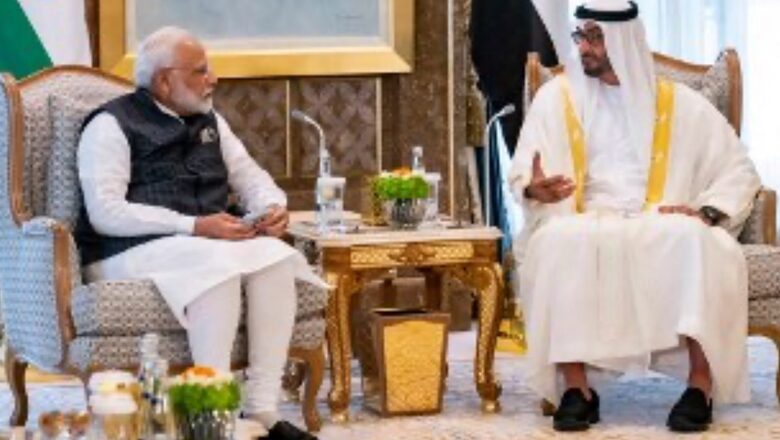
views
Economics is a social science, distinct from natural ones. By definition, it builds in flexibility and operates in specific contexts. The biggest contribution of economics is to construct a variety of models and the most important economic skill is to choose the best model for a given context. Economic models may be mathematical but choosing what applies to a real-world situation is an art.
The global economic commentary, especially in the last two decades, has been captured by those confusing art and science. There has been a rigid, cast-in-stone clamour for ideas like non-tariff free trade without any acknowledgement, let alone understanding, of the distributional aspects of this proposition. Unfortunately, critical assessment of economic dogma is a lagging indicator in India. Fortunately, however, India’s real-world policymaking continues to be pragmatic, contextual and infused with clarity of purpose.
The Comprehensive Economic Partnership Agreement (CEPA) signed with the United Arab Emirates (UAE) is a perfect example of this hard-headed pursuit of self-interest. The signing of the CEPA demonstrates that the Narendra Modi government has mastered the art of practical policy-making. The government takes pride in relinquishing the academic chase of five-star policy ratings dispensed by commentators as far removed from the realities of Indian society as the Indian society has been from rapid industrialization.
Also Read: Trade, Trust and Treasure: India-UAE Deal Shows Success of Modi’s Middle East Policy
The doors of the gulf countries have been more than ajar for Indian exports. The UAE is in fact the second-biggest export destination for India. But the CEPA now knocks off the door to a prosperous economy and a geopolitical friend, with mutual consent. The CEPA expounds that India is not afraid to embrace new trade models and make quid pro quo arrangements. But give and take is a two-way traffic. India will happily act when the roads expand on both sides.
Not just the CEPA with the UAE, India is also in trade talks with several other partners. The negotiations with Australia have been the fastest, followed by those with the United Kingdom. The discussions with Canada and Israel are at the next level of maturity. The CEPA with the UAE may also open up the possibility of a similar agreement more broadly with the Gulf Cooperation Council, which will be an excellent pact to sign, given that Saudi Arabia is also a top-five trading partner with India.
However, the free trade agreements (FTAs) with the European Union and the United States of America have been on the backburner. This situation also follows from clear-headed identification of India’s interests rather than woolly-eyed ideas about FTAs themselves.
The European Union has been assiduously pursuing topics like environment action, gender justice, labour standards, human rights and democratic rights as integral parts of its FTAs. The European Union has signed several FTAs and this information is very much public knowledge. While each of these subjects is worthy of making improvements, such improvements cannot be linked to a trade incentive offered by a third party. Just because the European politicians have happily traded off their national sovereignty for subsidiarity to a Brussels-based stateless technocracy, there is no reason India should follow suit and trade-off its own sovereign rights for a trade pact.
Similarly, the United States has been a vociferous opponent of India’s agriculture support mechanisms. This is a red-line for any Indian negotiation. India did sign on a very bad deal on the quantum of its support to the agriculture sector in the Agreement of Agriculture in the early 1990s when the negotiations to form the World Trade Organization (WTO) were going on. But there is no reason to not push back the United States now on similar expectations.
The Indian FTAs of the past were rooted in theory. It made no sense to sign an FTA with the ASEAN nations, almost all of them significantly better-equipped than India to run mercantile policies with definitively stronger manufacturing capabilities. It was also not easy to crack the services markets of these countries – in fact, India was far behind in obvious services like tourism relative to these markets. None of the ASEAN countries would be willing to run a trade deficit with India. The result of that mistake is quite obvious a decade later, with India being the net importer with neither any reciprocal strength developed nor any sign of Indian consumers enjoying substantially better-quality products.
The CEPA with UAE can push the bilateral trade from $60-billion a year to $100-billion a year. Add to this the potential FTA signings with Australia, Canada, Israel and the United Kingdom, and just this bouquet can deliver a sustainable, predictable and value-added leg up to Indian exports.
There should be no hesitation in accepting that globalization is currently in recession since the global financial crisis hit the world. The Covid-19 pandemic has further established the upper limits of acceptable globalization. Intuitively, every country today knows the boundaries of its policy-openness cartography. In this global environment, the FTAs offer a perfect shot at a barbell strategy with the WTO-style most favoured nation status-based open trade at the other end.
However, the FTAs themselves have to be signed from the perch of utility and not from the intellectual seduction of economic dogma. The CEPA with the UAE ticks this criterion as perfectly as the Sachin Tendulkar Desert Storm knock from 1998 in Sharjah.
In 2010, development economists Lant Pritchett, Michael Woolcock and Matt Andrews wrote a paper titled, ‘Capability Traps? The Mechanisms of Persistent Implementation Failure’. They propounded the concept of isomorphic mimicry – the tendency of governments to mimic other governments’ successes influenced by best practices, without always factoring in the contextual difference.
The CEPA with the UAE is a perfect antidote to this template, best practices thinking. This Modi government move should be heralded not just for the potential economic benefits it will accrue but also for eschewing mindless isomorphic mimicry.
Nimish Joshi is a technology entrepreneur and public policy commentator. He runs the Mumbai-based Smahi Foundation, which works on policy issues at the intersection of governance and technology. The views expressed in this article are those of the author and do not express the stand of this publication.
Read all the Latest Opinion News and Breaking News here



















Comments
0 comment